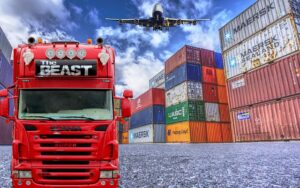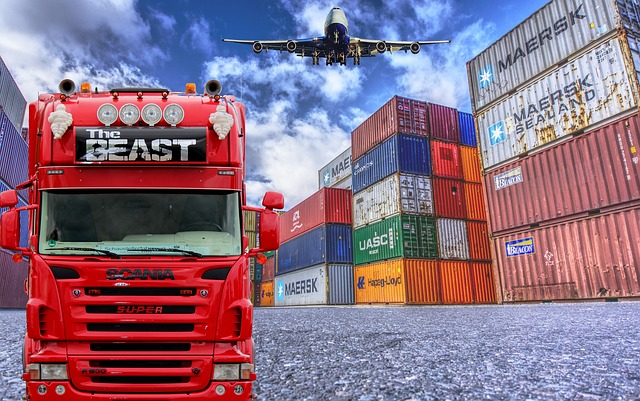Let’s talk about Supply Chain
 What I do for a living is the intersection of supply chain and technology. This has taken many forms over the years from consulting to sales to startups. I really never chose a career path in Supply Chain or technology. I just happened to get my first job working in logistics for a technology company and it progressed from there.
What I do for a living is the intersection of supply chain and technology. This has taken many forms over the years from consulting to sales to startups. I really never chose a career path in Supply Chain or technology. I just happened to get my first job working in logistics for a technology company and it progressed from there.
The interesting thing is that all of a sudden, as I roll towards the twilight of my career, supply chain is front and center in the world’s zeitgeist.
I even had one of my running buddies ask me on a ride last weekend, “What’s going on with this supply chain stuff?”
Since I’m an expert, why don’t I touch on some of the current topics?
What is a supply chain? It is the label used to refer to all the activities it takes to get a product to its consumer.
What’s an example? Let’s take the phone in your pocket. How does that phone end up in the store or on the website where you bough it. Someone has to make it and send it to you.
You, and your desire to have this phone in your pocket and your willingness to fork over some cash for it are the demand.
To make it they need to have manufacturing and packaging facilities. These could be anywhere in the world. These are the manufacturing, assembly and distribution links in the supply chain.
They need to have all the components that go into the phone. Plastic, cameras, metal, circuits, chips. Each of these comes from a different supplier in a different place around the world. These are the sourcing and procurement links in the supply chain.
Each of these suppliers in turn need the raw materials to make the components. Rare-earth metals. Industrial plastics. Chemicals. These are the raw material and ingredient links in the supply chain.
They have to get that phone to you as well.
This requires finding and buying all the stuff, moving all the bits and pieces to the manufacturing and packaging sites, then to distribution facilities and finally out to you. This is the logistics and distribution part of the puzzle. Distribution centers, ports, trucks, planes, trains and boats.
In an amazing choreography all these companies and processes work together across the globe to bring you that phone.
The modern global supply chain is an amazing thing. We have been working for decades to drive cost and time out of this chain for you to get your phone when you want it at a great price.
As a result the links in the chain are quite tightly coupled. In the past there would be buffers in the supply chain. What does that mean? It means that there would be extra time and extra inventory sprinkled across the supply chain.
This extra time and inventory would act like a shock absorber when something went sideways. But this extra time and inventory cost money, so we drove it out through applying more efficient processes and technology. Yup, I helped.
The modern supply chain is based on lean practices. This makes it very efficient. It also can make it fragile.
The next thing you need to understand is “the Bullwhip Effect”. What this means is that changes in supply and demand will get amplified as they move through the chain.
Here’s how it works. Let’s say that phone is featured in a viral video and all of a sudden, instead of 1,000 phones a month you have demand for 2,000. What do you do?
You order more.
But everyone else had the same idea so your supplier doesn’t have enough. What do they do? They start trying to allocate their existing inventory. They also increase their lead times. They also turn around and order more from the manufacturer. But they want to make sure they have enough so they order 30% extra.
The next link in the chain now sees their demand go up by the original increase plus 30% extra safety buying. They turn around and do the same thing to their suppliers. By the time that demand signal gets to the other end of the chain it has been inflated by 1,000%.
What happens next? Everyone increases their lead times thinking that will give them a chance to catch up. When they increase the lead times that causes everyone in the next link to order more again because now they have to have enough inventory to cover that extra time.
You get a big variability in supply and/or demand at any place in the supply chain and it causes these big ripples that turn into waves as they are transferred up and down the chain.
Eventually the original demand or supply signal normalizes and everyone is stuck with a bunch of inventory they no longer need.
And that’s what’s been happening since Covid started. You have these major shifts in demand patterns combined with loss of capacity.
Why is there loss of capacity on the supply side? Why can’t you find bacon for instance? Because to make bacon you need a big room full of people with sharp knives cutting up pigs. When there is a covid outbreak you can’t have a room full of people like that. You lose your people and you lose your capacity.
When Covid hit a lot of these labor-intensive businesses got shut down. A lot of workers left due to safety concerns. A minimum wage job standing around all day in pig offal probably isn’t worth dying over.
The other two you here about it warehouse workers and truck drivers.
There has been a growing shortage of truck drivers for a couple decades now. The baby boomers are retiring. It’s hard to attract people who want to drive a truck.
Warehousing has exploded in the last 20 years as the supply chain becomes global. Stuff has to be moved and shipped to where it’s needed. It has to pass through a warehouse at some point.
With the explosion of on-line shopping there are millions of extra warehouse workers required.
Someone has to go to where your stuff is being stored in the warehouse, reach into a box, grab your item and pack it into another box that they can ship to you. It’s very labor intensive.
This is why there is so much news about robots and self-driving vehicles and drones. Labor is your number one constraint and your number one cost. Robots don’t show up late, ask for health insurance or take breaks.
The final point I’ll make about these jobs is that they’re not great jobs. When I worked in the warehouse 30 years ago it was different. You could get away with doing whatever you wanted.
Now every job is driven by technology.
They know where you are and what you’re doing every minute of the day and they work hard to optimize that.
Same with drivers. Gone are the days when you could swing by your girlfriend’s house for a rest stop. They know where that truck is and what it is doing real time.
It’s a bit of a catch 22. Labor is your biggest cost so they throw technology at it to get the most efficiency they can out of that labor. This makes the work very hard.
This is all to say that part of the problem is that these modern warehouse jobs are soul sucking for most people and that makes it harder to staff them.
Eventually they will all be automated because the gap between supply and demand is too great.
So, my friends, some of these problems are structural, meaning they will take a few years to correct. And things will be structurally different. The majority of them are transient, meaning when there’s a gap between supply and demand capital will quickly close that gap.
What we are seeing today is one of the most variable and uncertain periods of supply and demand in a long time. But, the modern supply chain is a thing of beauty and it will quickly respond.
The long term impact is that you will see increased automation displacing those labor intensive jobs at an accelerated rate. You will see some structural changes to reduce risk and increase flexibility, like moving to more domestic supply.
But, we aren’t at the apocalypse quite yet.

